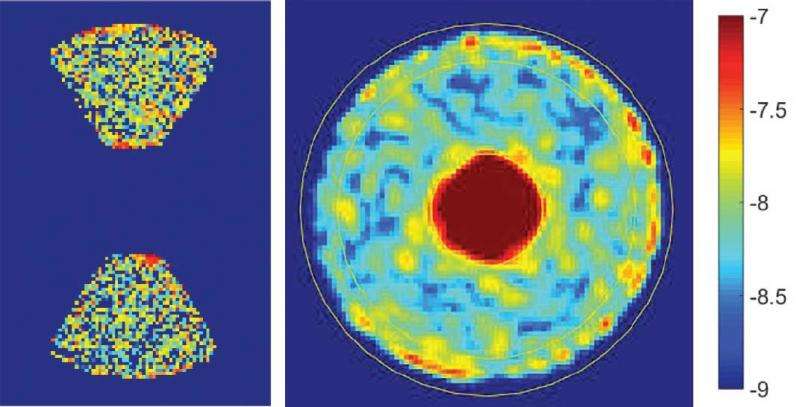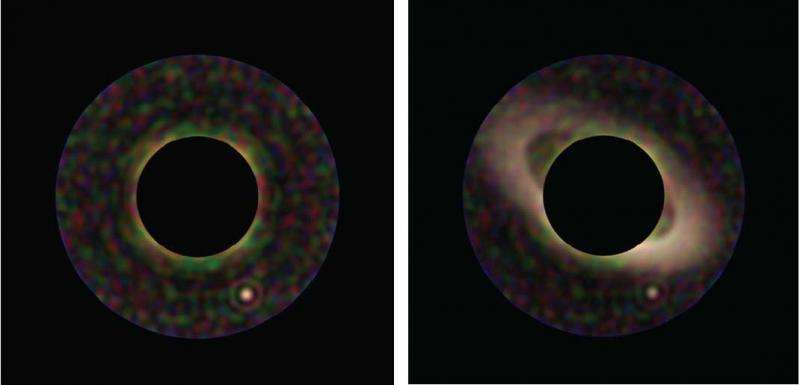Imaging giant exoplanets around nearby stars

The Wide-Field Infrared Survey Telescope (WFIRST) is the highest-ranked recommendation for a large space mission in the NRC 2010 decadal survey, New Worlds, New Horizons (NWNH) in Astronomy and Astrophysics. The WFIRST coronagraph instrument (CGI) will be the first high-contrast stellar coronagraph in space. It will enable WFIRST to respond to the goals of NWNH by directly imaging and spectrally characterizing giant exoplanets similar to Neptune and Jupiter, and possibly even super-Earths (extrasolar planets with a mass higher than Earth's but lower than our Solar System's ice giants, Neptune and Uranus), around nearby stars. The WFIRST CGI includes both a Shaped Pupil Coronagraph (SPC) and a Hybrid Lyot Coronagraph (HLC). All three of WFIRST's CGI technology milestones for 2015 were passed successfully.
First, the HLC demonstrated a raw contrast (speckle/star intensity ratio) of 10-8, using a 10% bandwidth filter in visible light (550 nm), in a static environment. Second, the SPC achieved the same milestone under the same conditions. For both the HLC and SPC, the figure above shows excellent average contrast (blue-green) over most of the field of view, and slight turn-up (red) at the inner and outer radii, as expected. The third milestone was accomplished when the Low Order Wavefront Sensing and Control (LOWFS) subsystem achieved its goal of providing sensing of pointing jitter and control at the 0.4 milli-arc-second rootmean- square (RMS) level, which will keep a target star sufficiently centered on the coronagraph star-blocking mask, when the WFIRST telescope experiences pointing drift and jitter.
With achievement of these milestones, NASA is a major step closer to being confident that WFIRST will be able to directly image planets and dust disks around nearby stars. There are at least 15 radial-velocity exoplanets that both coronagraphs will be able to image in their dark hole regions, in a few hours integration time each. The WFIRST coronagraph will enable scientists to see these exoplanets directly for the first time, and the images will be in their true colors (using some of the other color filters in the CGI). A simulation is shown in the figure on page 9, where the blocked star is hidden inside the annulus; a planet is seen at about 5 o'clock, and the star is assumed to have no zodiacal dust around it (left) or a strong dust cloud (right).

WFIRST successfully completed its Mission Concept Review in December 2015, in preparation for its Phase-A start the following January (which was also successful). The CGI is baselined as a technology demonstration instrument on WFIRST; it does not drive mission requirements beyond those needed for the Wide Field Instrument. However, with one year of allocated observing time out of a six-year mission, NASA expects that it will achieve breakthrough science, and will demonstrate key technology elements for follow-up missions, the next of which could be aimed at finding habitable Earth-like planets around nearby stars.

Provided by NASA




















